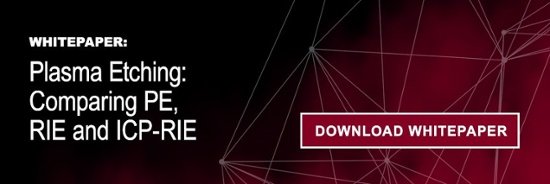- Home
- PRODUCTS
- OVERVIEW
- VERSALINE®
- SINGULATOR®
- VISION SERIES
- TAKACHI SERIES
- ENDEAVOR PVD
- HEATPULSE RTP
- TEGAL RIE
- ECLIPSE PVD
- QUAZAR™ SYSTEMS
- QUAZAR™ PLANETARY IBE
- LAPECVD™
- VERSALOCK®
- ORBIS™
- MASK ETCHER® SERIES
- ODYSSEY HDRF™
- KAYEN HDRF™
- TRYMAX® NEO SERIES
- KOBUS
- CORIAL SERIES
- CERTIFIED PRE-OWNED PRODUCTS
- PROCESS CONTROL
- PRODUCTIVITY ENHANCEMENTS
- MARKETS
- TECHNOLOGIES
- SERVICE & SUPPORT
- COMPANY INFO
- BLOGS

How to Factor Etch System Upgrades into ROI Calculations
The bottom line of an etching operation depends on so much more than simply the initial cost of the equipment. Recurring costs, such as expendables and chemicals, maintenance costs, downtime, training, and upgrades' impacts, determine whether or not a system is profitable. The Return on Investment (ROI) must be positive if the etching process is going to add value to the wafers.
Quotation vs. Cost of Ownership (CoO)
When a company requests a quote, it is essential to realize that the equipment cost is only part of the equation. It's like buying a car- a less expensive vehicle may use more gasoline or require more maintenance than a more expensive car, and either car will cost more than the sticker price. What is often harder to calculate is the Cost of Ownership (CoO).
Three of the main impacts on CoO are depreciation, operating costs, and footprint. Depreciation rates depend on the tax code and how the machine is classified. Typically, semiconductor processing equipment either depreciates over 5 or 7 years.
Operating costs include everything from utilities to consumables and replacement parts. A system that does not use power efficiently will drastically reduce the ROI. It also depends heavily on maintenance costs and downtime. Essential parameters to track are the Mean Time Between Cleans (MTBC) and Mean Time to Clean (MTTC). In other words, tracking how often the equipment must be cleaned and how long it takes to clean the equipment are vital to understanding the CoO.
Also, the physical size of the equipment, known as its footprint, is part of the CoO. Not only does a larger machine have a larger footprint and use space that could be used by other equipment, but that space is expensive to maintain. Because this equipment sits in a cleanroom, the space occupied by a machine represents clean, filtered air, all of which is expensive. The footprint is so important that one way to discuss ROI is to divide the throughput by the footprint to understand how much the etching equipment benefits production. Regardless of the calculation method, to maximize ROI, reduced machine footprint means reduced operating costs.
Profit vs. Cash Flow
When calculating ROI, one of the most common mistakes is not understanding the difference between profit and cash flow. Even though a process may have profit coming in, cash flow determines when money has actually been transferred and is free to be spent. ROI is often mistakenly taken as a cash-out for expenditures and profit for revenue. A better approach is to calculate ROI as cash flow in both directions. A cash flow ROI analysis tracks the amount of money coming into and leaving the company over a particular window of time.
To make the most of an ROI analysis, map out a prediction of costs and revenue with respect to time to ensure that there is always a realistic view of the cash flow. This should include all of the CoO, potential income, and other factors.
The ROI of System Upgrades
Automation
CoO is drastically reduced by implementing automation in most cases. Instead of training and paying employees to load and unload equipment manually, automated loading and unloading can save a significant amount of money in day-to-day operations. Furthermore, automation results lead to more repeatable results as compared to manual handling.
When measuring throughput, or how much saleable product moves through the etch stations, one must consider all variables. How big are the wafers? How many are processed at a time? How long does it take to ready the etch chamber? How long does it take, and how often must the chamber be cleaned? Do wafers require two-sided processing?
Investing in additional automation means "clusters" or "lots" of wafers can be handled in a self-contained package, complete with its own clean environment. While each wafer is still processed individually, they remain sealed in a container when not in a processing step. Automation of loading and unloading offers a smooth, clean transition through all stages in the etching process.
Software
CORTEX Pulse Control software is a way to control all process variables, such as gas flow rates, radio frequency (RF) power, ICP power, working pressure, and others. Its capabilities include interfacing and full control of DRIE-Bosch, ALE, and ALD processing equipment.
The software features an intuitive Graphical User Interface (GUI) and easy process. Process steps can be created, saved, stored, and edited as needed. Process steps can range in time from 10 ms to 1 second, giving the engineer or technician the control needed to optimize etch rate and minimize undercutting for a given application. Minimizing undercutting leads to a higher yield of properly-etched wafers which increases the ROI of the entire system.
Hardware
Certain hardware upgrades reduce downtime in processing and reduce quality excursions. Any time the amount of material reworked or scrapped can be reduced, the CoO decreases, and thus the ROI increases.
One such investment is to upgrade the etch system with Marathon IBE grids. Marathon IBE grids have been proven to last at least twice as long as competing grids, reducing the downtime due to grid cleanings, replacements, and alignments.
The Marathon IBE grids are also easily and reliably aligned, meaning ion beams are focused and accurate, reducing splatter and etching from the grids. This reduces variation in etch depth and rate across the surface of each wafer, increasing the yield of usable dies, thereby raising ROI.
Conclusion
ROI can be difficult to calculate. However, good recordkeeping of consumables and utility usage combined with smart planning and efficient upgrades will raise the ROI and make a process more viable.
To learn more about plasma etching and ROI considerations, download the eBook "Plasma Etching: Comparing PE, RIE, and ICP-RIE."




